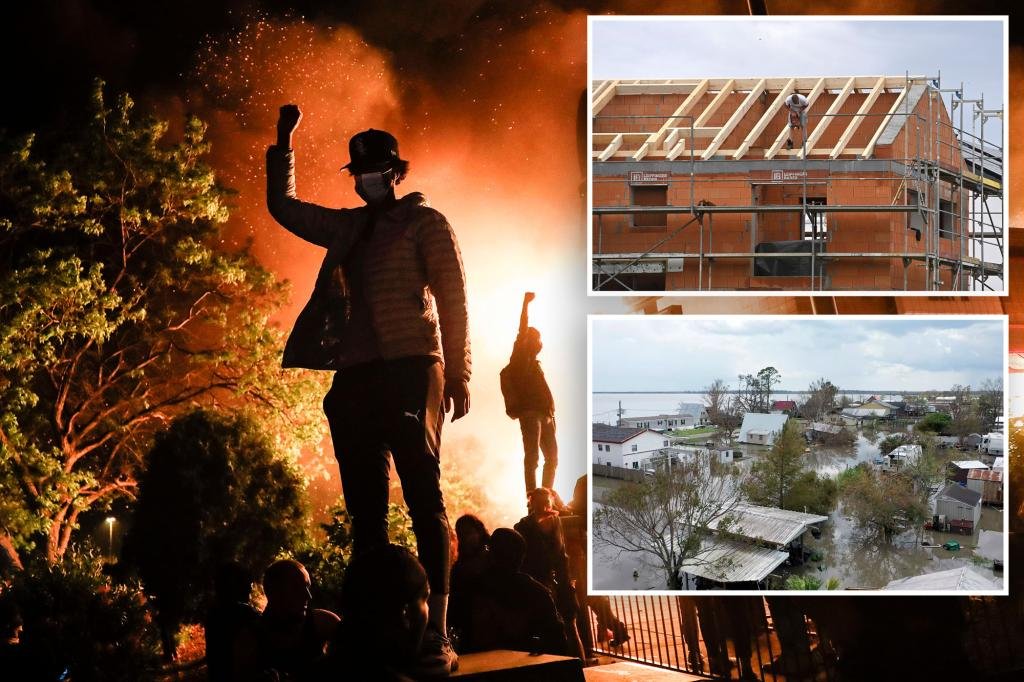Why the diversity-industrial complex bubble burst
In my sub-40 years of existence, I’ve witnessed multiple market bubbles and collapses that in hindsight were predictable, but the warning signs of inevitable failure were obviously ignored.
People disregard the few naysayers because their desire to be a part of an in-vogue fad outweighs any common sense.
But when the bubble finally bursts, the sound of an industry defeat ultimately wakes these people up from their hypnotic belief that the good times will never end.
The latest bubble isn’t overinflated stocks being propped up by Wall Street but instead an overinflated diversity, equity and inclusion industry whose importance was pumped up by a corporate America reacting to the death of George Floyd.
Between 2019 and 2022, DEI positions skyrocketed 170%, according to LinkedIn, with much of that acceleration happening in the wake of nationwide protests and riots in 2020.
“There was an urgency and a national narrative driving that demand,” notes Jason Hanold, CEO of Hanold Associates, an executive search advisory firm.
But that demand quickly leveled, leading to a third of “diversity professionals” out of a job in 2022.

The rush to build a new diversity infrastructure within corporate America, often operating completely separate from human-resources departments, had companies nationwide failing to ask two essential questions before investing millions: How exactly do we measure the diversity department’s success? And what are these newly heralded diversity officers’ responsibilities?
“Some companies were well prepared and ready. Many companies were not — and struggled to define success, give the resources, accountabilities and responsibilities needed to perform well,” Hanold explains.
What he’s describing is America’s corporate environment, which was frequently chastised for being emotionless with its ruthless objectives to increase profit margins and efficiencies, suddenly becoming emotive due to the fear of liability in the form of lawsuits for not adjusting to the rage of the moment.
Although we see corporations as entities, we forget they’re essentially run by people just as persuadable as the rest of us.
And with the media’s racial-division propaganda machine in full effect, the people within these companies wondered if the social-justice natural disaster would soon flood into their boardrooms.

Like a door-to-door insurance salesman in New Orleans days after Hurricane Katrina, the DEI industry was prepared to take advantage of corporate leaders’ angst by promising social-justice preventative coverage at a rate found only in the fine print.
The diversity-industrial complex uses fear as an introduction to its sales pitch of a corporate utopia where profit and social consciousness can cohabitate and seals the deal by catering to executives’ egos by showing them the unique pleasures of being civilization’s commercial saviors.
In the corporate world, the departments that generate money tend to get larger budgets, but DEI departments across America sliced into the budget pie and continually ate away at it with their pursuit of satisfying their social-justice financial gluttony — and they find many willing to pay.
Every other department has metrics to meet to rationalize their existence and measure performance, but how exactly do you measure diversity?
What metric point can you use to evaluate equity?
Any rational person could see this scheme was doomed to fail economically and environmentally.
Because to justify their existence, “diversity professionals” needed to seek out problems and issues — and if there weren’t any to be found, manufacturing them would suffice.
With their companies’ internal structure ideologically captured, they left the flesh of their budgets exposed to the external leeches that are corporate diversity trainers, sucking dry consulting dollars in return for poisonous psychobabble.
But now that the fear has subsided, there’s come a realization that this formerly coveted overhaul of an approach to management is nothing more than an employment opportunity for ideological and mediocre college graduates with undesirable degrees, a career avenue for wanderlust executive types and a ploy to siphon money from corporate budgets while producing nothing of substance.
Corporate America presumed a culturally negative diagnosis based on dogmatic diversity industrialists’ rhetoric and made itself sicker for not seeking out a second opinion.
DEI was the corporate version of a Nigerian love scam — they’ll never get that money back.
Adam B. Coleman is the author of “Black Victim to Black Victor” and founder of Wrong Speak Publishing. Follow him on Substack: adambcoleman.substack.com.




